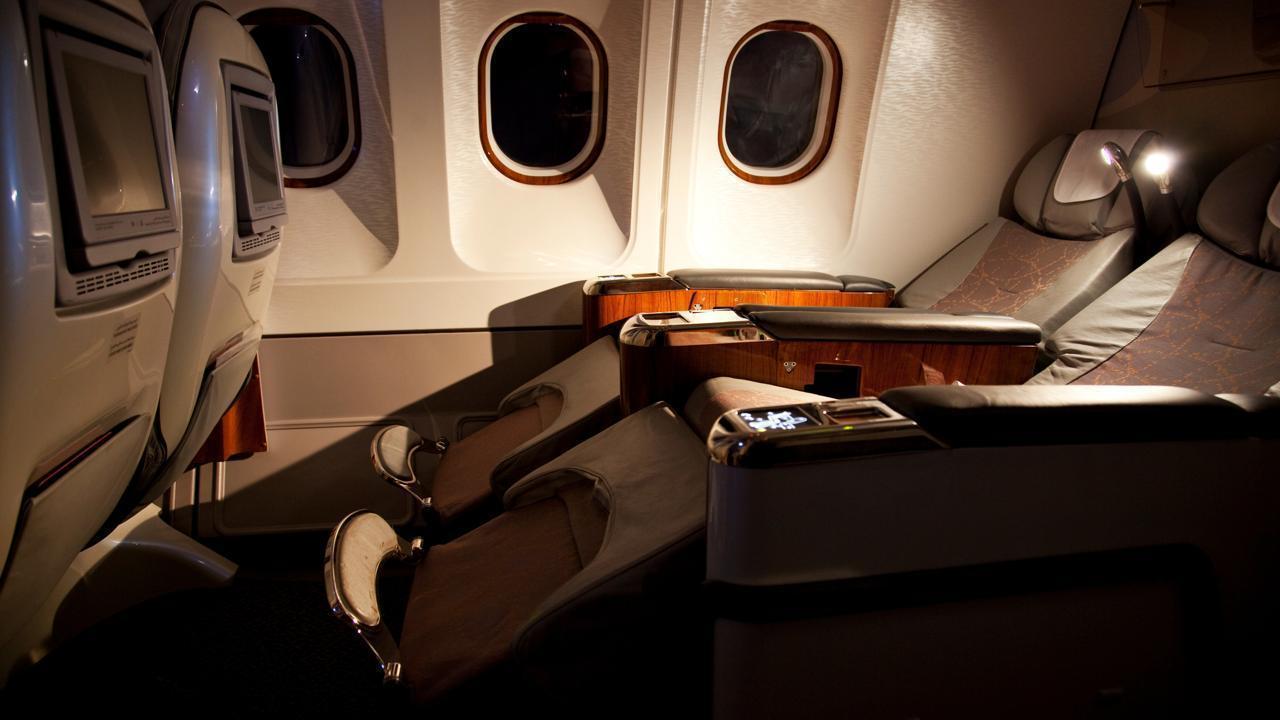
Post by : Amit
Comfort Takes Flight: Aircraft Cabin Interiors Market Poised for $45 Billion Boom by 2032
In a rapidly evolving air travel landscape where passenger expectations are soaring, the aircraft cabin interiors market is undergoing a transformative growth trajectory. According to a new report by Fortune Business Insights, the global aircraft cabin interiors market is projected to soar from $28.26 billion in 2024 to over $45 billion by 2032, growing at a CAGR of 6.2%. The trend underscores the aviation industry’s shift toward personalization, sustainability, and tech-integrated comfort as commercial and business jets race to offer premium in-flight experiences.
The Drivers of Demand: Comfort, Connectivity, and Customization
Post-pandemic travelers are increasingly valuing health safety, convenience, and personal space. Airlines and aircraft OEMs are responding with investments in modular seating, advanced air filtration systems, touchless controls, and immersive entertainment setups. The integration of IoT, AI-based lighting, and mood-adaptive environments are becoming the new norm, transforming traditional cabin design into a dynamic, sensor-driven passenger cocoon.
We are seeing a growing preference for lighter, recyclable materials, noise-canceling panels, and intuitive cabin configurations,says James Karlsson, VP of Cabin Innovation at AviaDesign. Cabin interiors are now a strategic differentiator in airline branding."
Business Jets and LCCs Fuel Market Expansion
Interestingly, both ends of the aviation spectrum — low-cost carriers (LCCs) and private business jet operators — are boosting demand. LCCs aim to enhance comfort while maintaining high-density layouts, investing in slimline seats, USB-C power points, and streamlined galleys. Meanwhile, the business aviation segment is witnessing increased orders for bespoke cabin designs, luxury seating, and conference-ready layouts.
Aircraft manufacturers like Airbus and Embraer have already revealed new cabin concepts that maximize space and aesthetics. Boeing’s Sky Interior initiative and Airbus’ Airspace cabin family have gained traction for their emphasis on wide aisles, customizable lighting, and improved air circulation.
Sustainability and Lightweight Materials Take Center Stage
Sustainability goals are directly influencing cabin interior investments. Airlines are demanding eco-friendly, fire-resistant materials, reduced weight components to cut fuel burn, and recyclable fixtures. Companies like Diehl Aviation, Safran Cabin, Recaro Aircraft Seating, and Collins Aerospace are leading efforts in circular cabin design — using materials that can be disassembled and reused or repurposed at end-of-life.
A major cost-saver comes from composite seating frames and 3D-printed air ducts, which offer weight reductions of up to 25% over traditional components. The focus on weight optimization aligns with broader efforts by airlines to meet net-zero emissions targets by 2050.
Regional Growth Trends: Asia-Pacific and Middle East Accelerate
North America currently dominates the cabin interiors market due to large commercial fleets and heavy retrofitting activities, but Asia-Pacific is expected to witness the fastest growth. The rising middle class, new low-cost carriers, and rapid fleet expansion in countries like India, China, and Indonesia are pushing interior upgrades.
In the Middle East, luxury-focused long-haul carriers like Emirates, Qatar Airways, and Etihad are setting new benchmarks in cabin luxury. Their demand for suite-style seating, LED-lit ceilings, and high-resolution OLED displays is driving innovation across the value chain.
MRO and Retrofitting Surge
A significant chunk of the projected growth comes from Maintenance, Repair, and Overhaul (MRO) and retrofitting projects. With aircraft utilization back to pre-pandemic levels and thousands of planes staying longer in service, airlines are opting to modernize existing cabins.
This shift toward retrofits — rather than new deliveries — has opened opportunities for smaller suppliers and niche design houses to collaborate with airline MRO arms.
“Cabin refresh programs allow airlines to elevate passenger experience without major capex,” notes Sophia Ramesh, a senior aviation consultant at CAPA. “Expect to see a boom in plug-and-play cabin systems that minimize aircraft downtime.”
Certification, Cost, and Supply Chains
Despite optimism, the report flags several challenges:
Lengthy certification processes, fluctuating raw material costs, and supply chain bottlenecks could delay program rollouts. Airlines also face the dilemma of cost vs. passenger satisfaction, especially in price-sensitive markets.
Manufacturers are being urged to streamline production timelines and invest in digital twin simulations, 3D prototyping, and virtual cabin walkthroughs to cut design-to-certification cycles by up to 30%.
Leading Players and Strategic Moves
Major players in the aircraft cabin interiors space include Safran Group, Collins Aerospace, Panasonic Avionics, Thales Group, Zodiac Aerospace, RECARO, and Diehl Aviation. These firms are expanding partnerships with OEMs and leasing firms while also acquiring smaller, tech-driven interior startups to diversify their portfolios.
In recent months:
Cabin as Competitive Advantage
As airlines face fierce competition in the post-COVID travel rebound, the cabin experience is emerging as a key brand differentiator. From VR-based inflight entertainment to climate-adaptive seat fabrics, the future of cabin interiors is tech-forward, personalized, and green.
“Passengers may not remember your fuel efficiency, but they’ll remember the seat comfort and ambiance,” says Alex Barlow, Head of Passenger Experience at SkyReach Aviation.
If this forecast holds, the aircraft cabin interiors market will not just grow in value — it will redefine how comfort and technology intersect at 35,000 feet.
Aircraft Cabin Interiors, Flight, Aviation










Advances in Aerospace Technology and Commercial Aviation Recovery
Insights into breakthrough aerospace technologies and commercial aviation’s recovery amid 2025 chall

Defense Modernization and Strategic Spending Trends
Explore key trends in global defense modernization and strategic military spending shaping 2025 secu

Tens of Thousands Protest in Serbia on Anniversary of Deadly Roof Collapse
Tens of thousands in Novi Sad mark a year since a deadly station roof collapse that killed 16, prote

Canada PM Carney Apologizes to Trump Over Controversial Reagan Anti-Tariff Ad
Canadian PM Mark Carney apologized to President Trump over an Ontario anti-tariff ad quoting Reagan,

The ad that stirred a hornets nest, and made Canadian PM Carney say sorry to Trump
Canadian PM Mark Carney apologizes to US President Trump after a tariff-related ad causes diplomatic

Bengaluru-Mumbai Superfast Train Approved After 30-Year Wait
Railways approves new superfast train connecting Bengaluru and Mumbai, ending a 30-year demand, easi